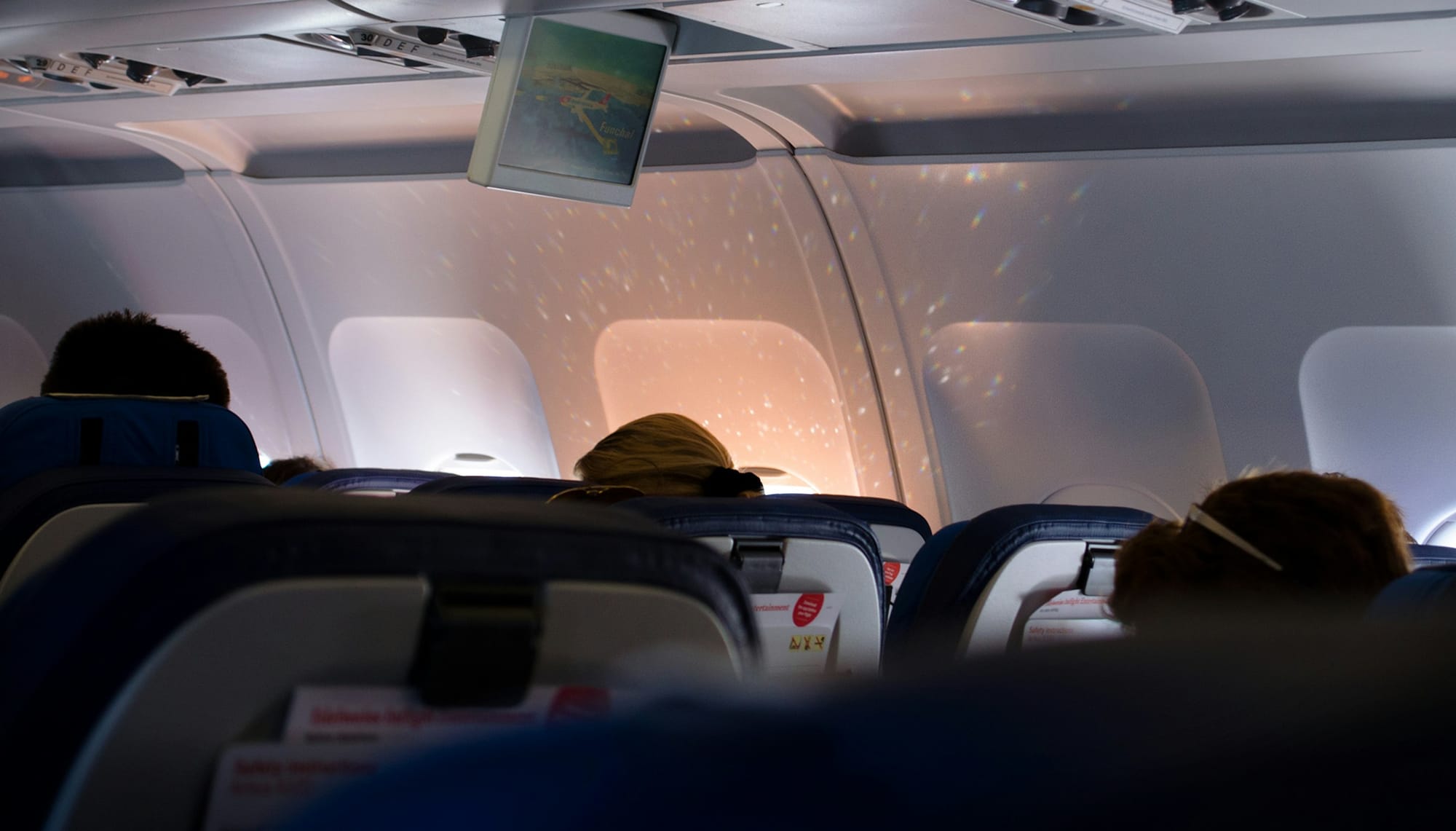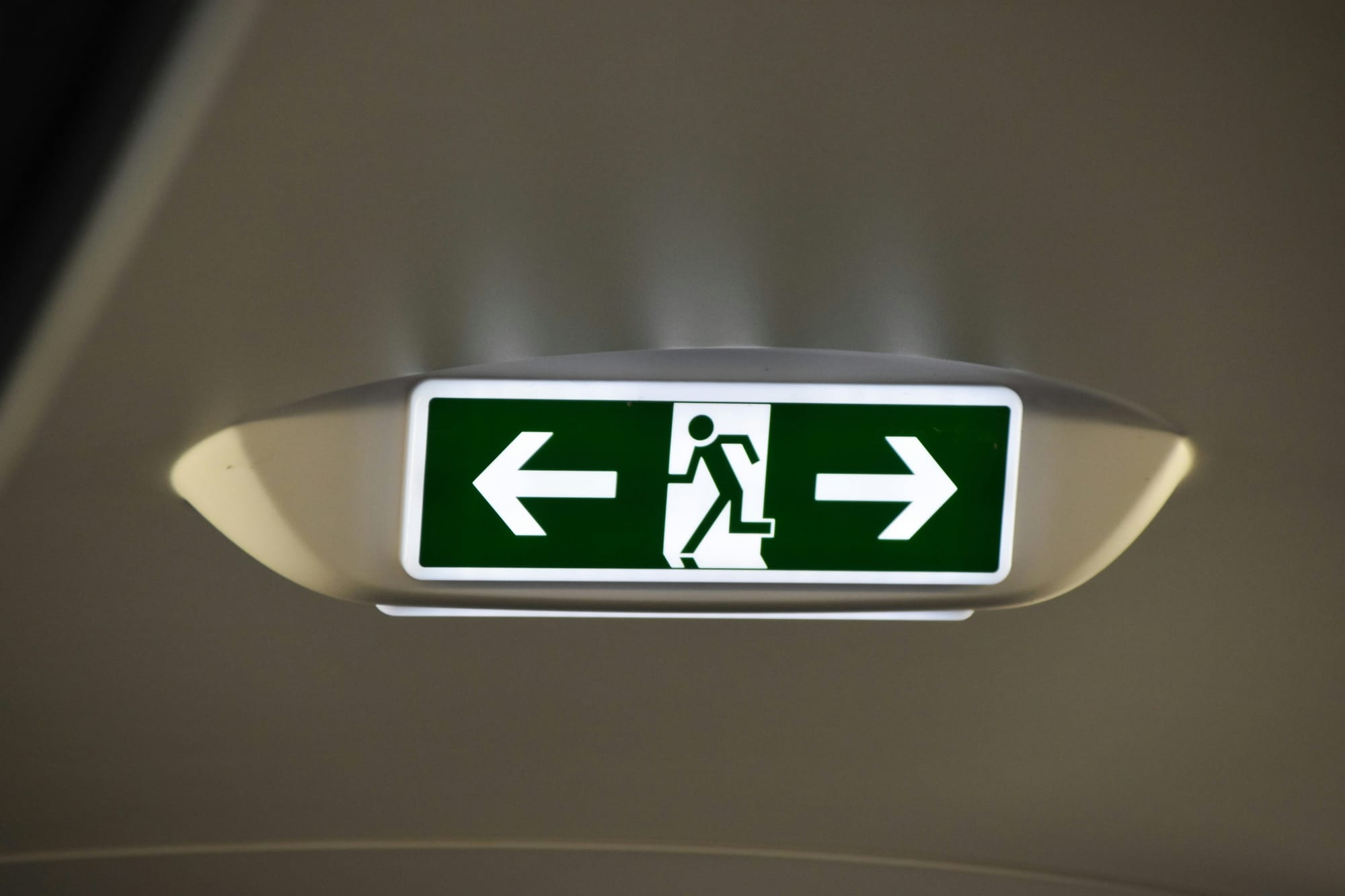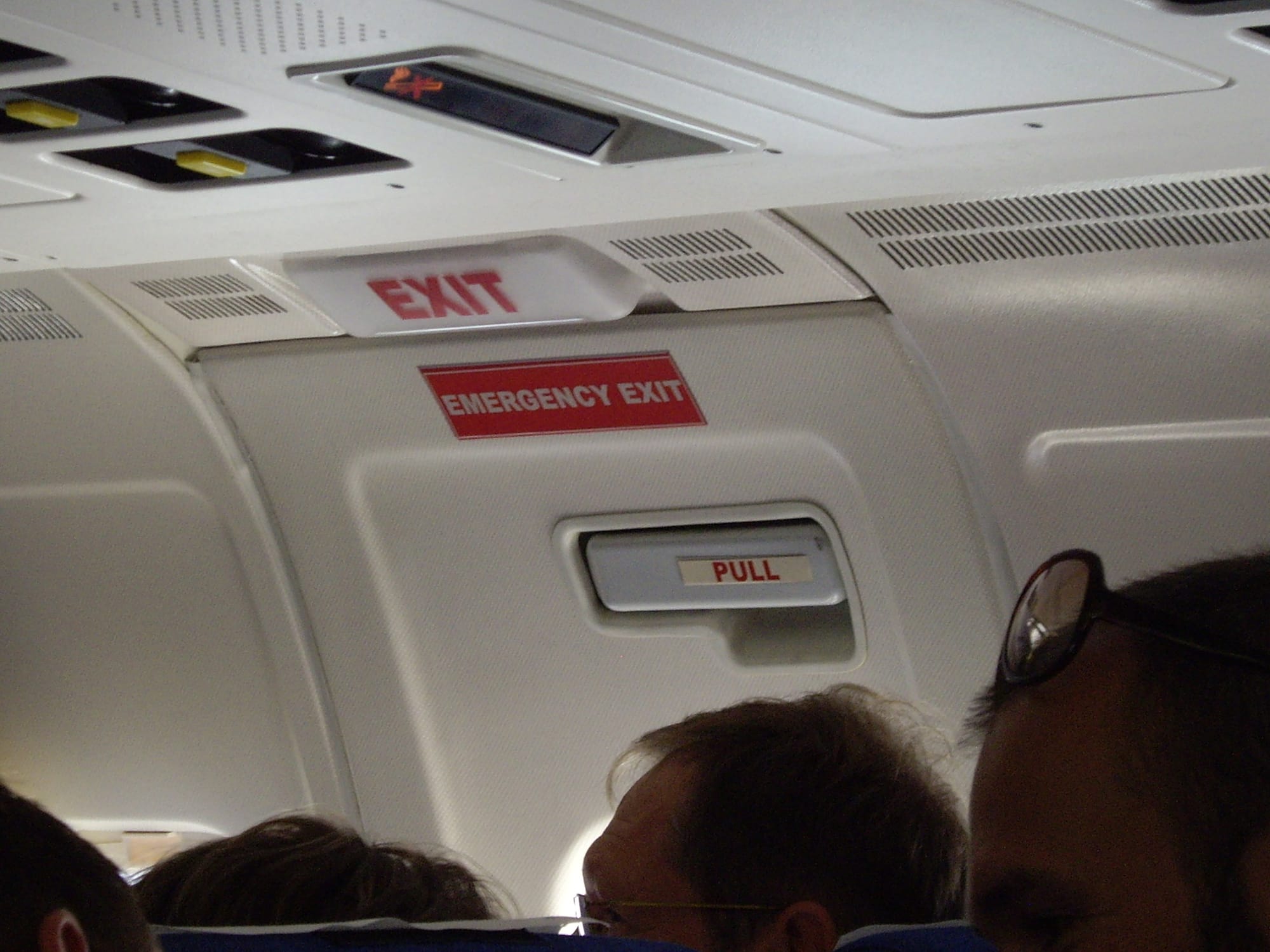Why Opening an Airplane Exit Mid-Flight is Impossible

Airplane travel, despite its safety record, can be a nerve-wracking experience for some. Claustrophobic cabins, turbulence, and the sheer audacity of hurtling through the air at hundreds of miles per hour can trigger anxieties. However, amidst these anxieties, a common misconception arises: the fear of someone accidentally (or deliberately) opening an emergency exit mid-flight and being sucked out into the abyss. Rest assured, this is a movie trope, not a realistic scenario. But what would happen if someone attempted such a feat?
The Physics of Pressure
Let's begin with the most crucial factor: air pressure. At cruising altitude, typically around 30,000 feet, the air outside the airplane is incredibly thin, with pressure significantly lower compared to the pressurized cabin environment. This pressure difference acts like a giant invisible hand, pushing inwards with a force of about 8 pounds per square inch (psi).
That might not sound like much, but consider the size of an airplane door – it's no small window. Multiply that pressure by the door's area, and you're facing a force exceeding 20,000 pounds, equivalent to the weight of several elephants! Simply put, trying to muscle open an emergency exit mid-flight is like trying to push open a bank vault door with your bare hands – impossible.
More Than Just Pressure

Even if someone possessed superhuman strength, the design of emergency exits itself poses another hurdle. These doors are not flimsy contraptions. They incorporate complex mechanisms, including interlocks and slides, specifically designed to prevent accidental opening. Opening them requires following specific procedures, and even then, significant force is needed. Additionally, flight attendants receive rigorous training on emergency procedures, and they would undoubtedly intervene and restrain any individual attempting to tamper with an exit.
Consequences Beyond Imagination

But let's entertain the impossible for a moment and imagine someone overcoming these obstacles. What then? The first and most immediate consequence would be a rapid decompression of the cabin. The rush of air escaping outwards would create a deafening roar, followed by a drastic drop in temperature and oxygen levels.
Passengers closest to the open exit would be exposed to the extreme forces of the airstream, risking serious injury or even ejection. The entire airplane would experience turbulence and potentially lose control momentarily. Thankfully, modern airplanes are equipped with sophisticated safety features that would automatically deploy oxygen masks and initiate emergency descent procedures to mitigate the dangers.
Legal and Personal Repercussions

Even if the individual involved survived such an ordeal, the legal repercussions would be severe. Tampering with an airplane's emergency equipment is a federal offense, punishable by hefty fines and imprisonment. Additionally, their actions could put hundreds of lives at risk, leading to civil lawsuits and social ostracization.
It's important to remember that airplane emergency exits are not meant for casual access. They are crucial lifesavers in the event of an actual emergency, such as a fire or cabin depressurization on the ground. Passengers sitting near exits are briefed on their responsibilities during pre-flight safety demonstrations. Understanding these procedures and respecting the restrictions surrounding emergency exits are vital for ensuring everyone's safety on board.
Beyond the Myth
So, the next time you find yourself on a plane and anxiety creeps in, remember this: opening an emergency exit mid-flight is not only physically impossible but also incredibly dangerous and illegal. The safety systems in place are robust, and the training of crew members is extensive. Instead of worrying about Hollywood scenarios, focus on enjoying the flight and trusting in the expertise of the professionals who ensure your safe journey.





